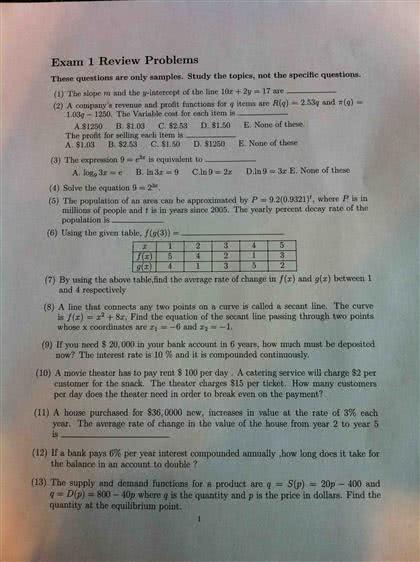MATH 1680 Lecture Notes - Lecture 1: Marginal Cost
Document Summary
Applied example 8 elasticity of demand for loudspeakers consider the demand equation. Solution: solving the given demand equation for x in terms of p, we find which is the elasticity of demand when =(cid:883)(cid:882)(cid:882). To interpret this result, recall that (cid:4666)(cid:883)(cid:882)(cid:882)) is price when =(cid:883)(cid:882)(cid:882). Therefore, (cid:886)(cid:882)(cid:882) (cid:4666)(cid:885)(cid:882)(cid:882)(cid:4667)= (cid:885)(cid:882)(cid:882) (cid:886)(cid:882)(cid:882) (cid:885)(cid:882)(cid:882)=(cid:885) which is the elasticity of demand when =(cid:885)(cid:882)(cid:882). It tells us that when the unit price is set at. per speaker, an increase of 1% in the unit price will cause a decrease of approximately 3% in the quantity demanded. Economists often use the following terminology to describe demand in terms of elasticity. The demand is said to be elastic if (cid:4666)(cid:4667)>(cid:883) The demand is said to be unitary if (cid:4666)(cid:4667)=(cid:883) The demand is said to be inelastic if (cid:4666)(cid:4667)



